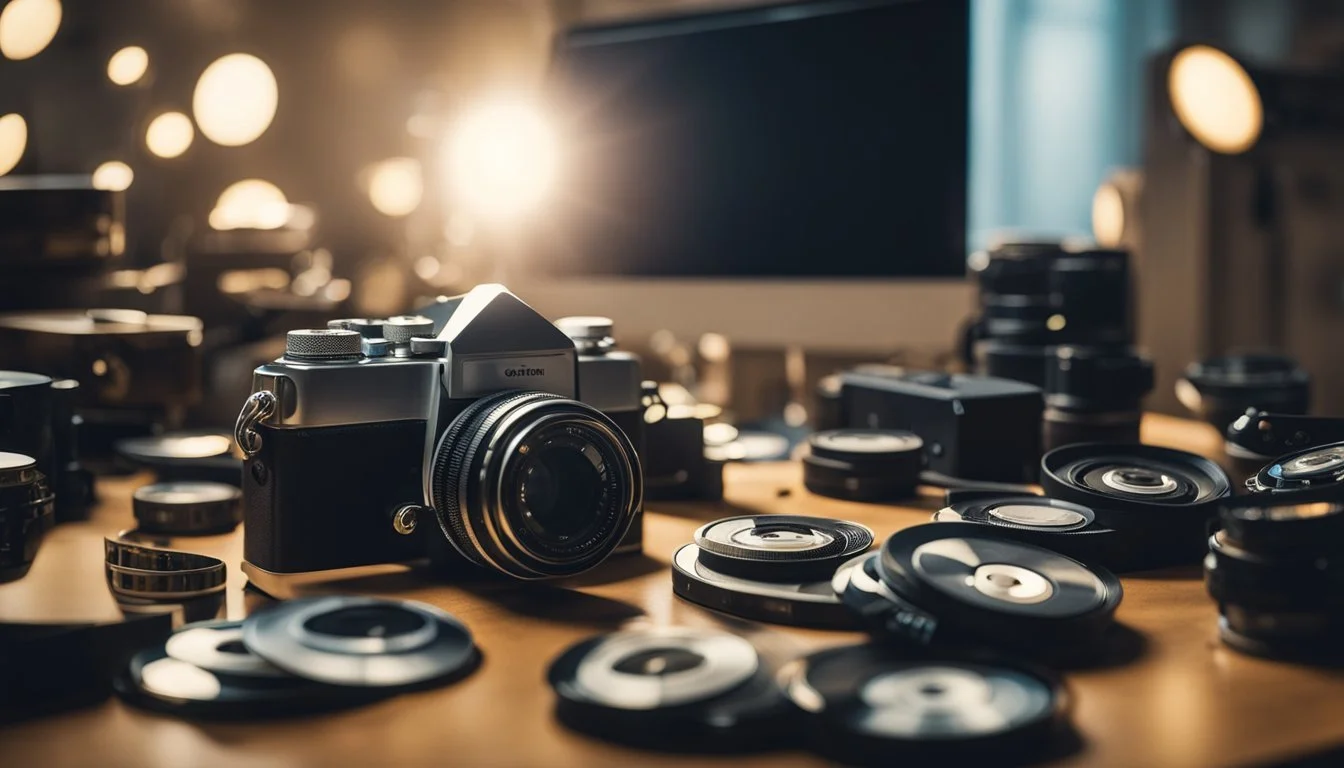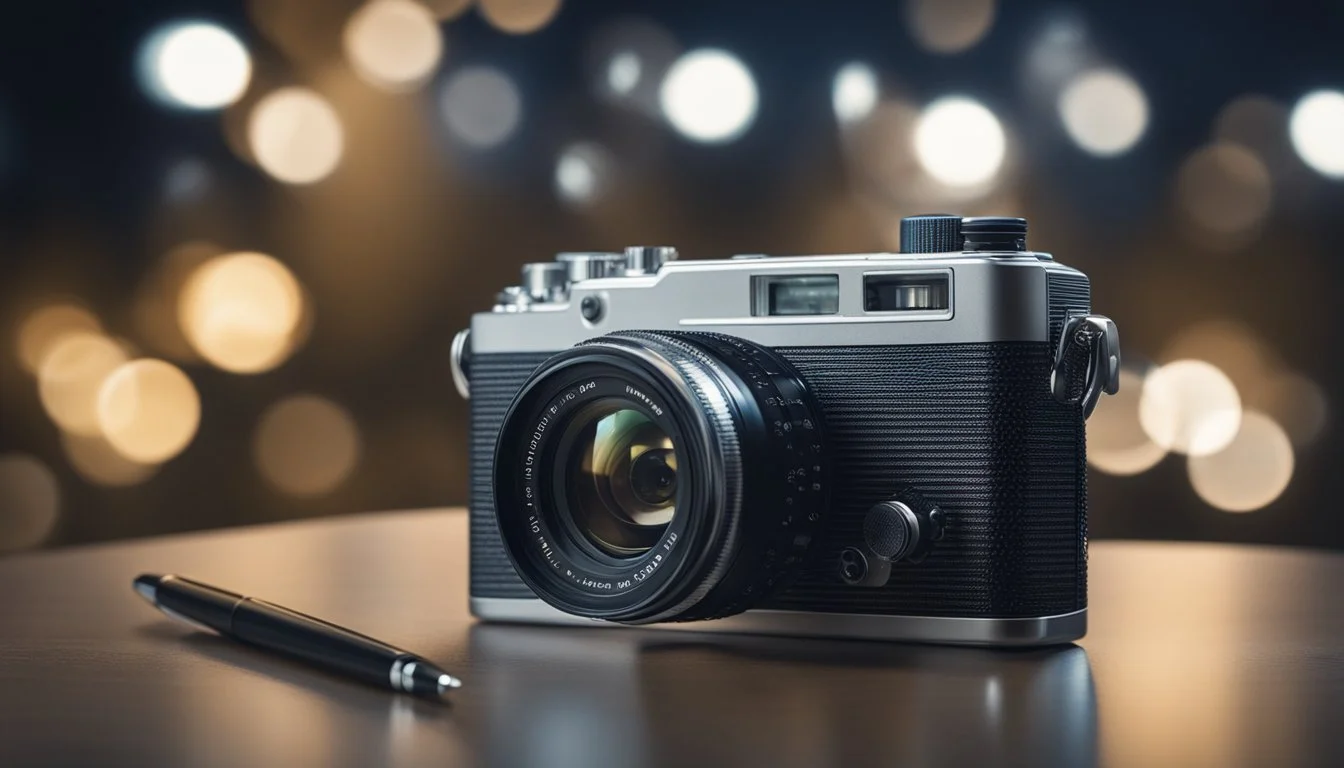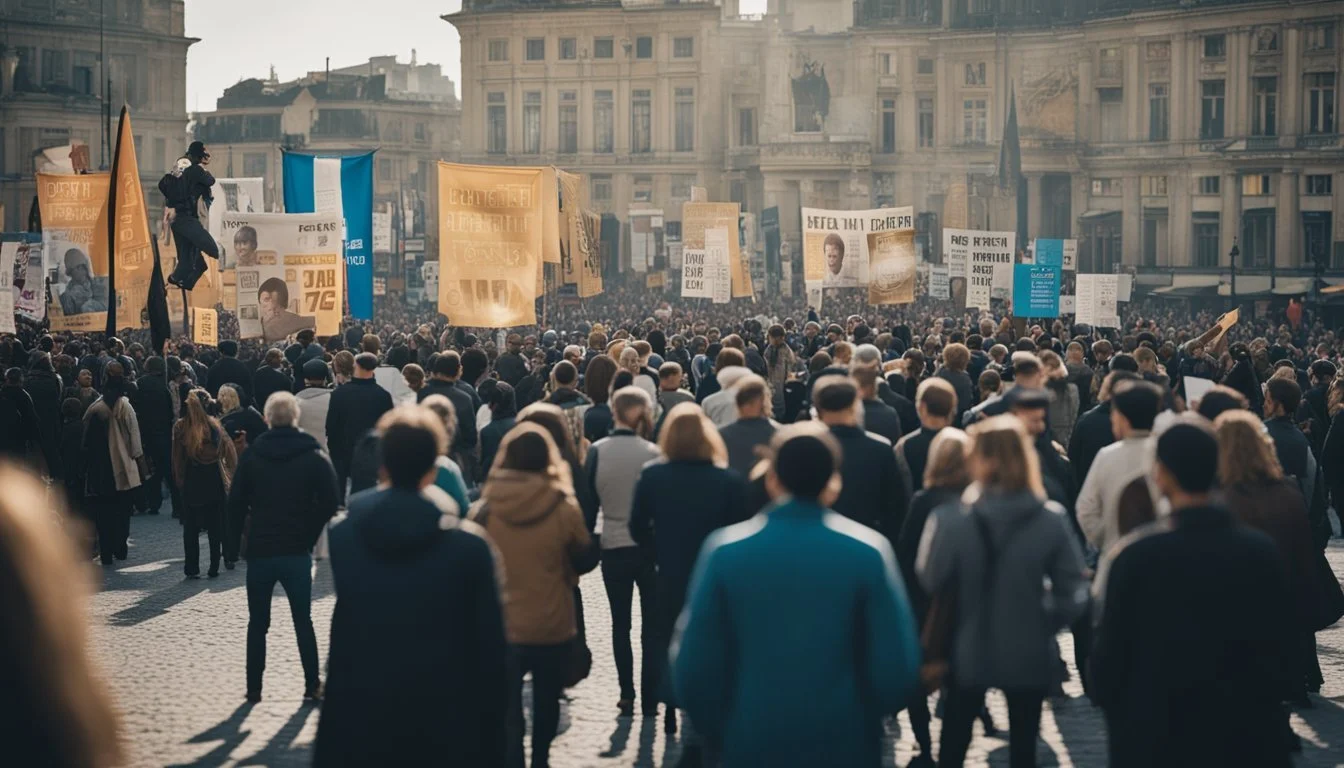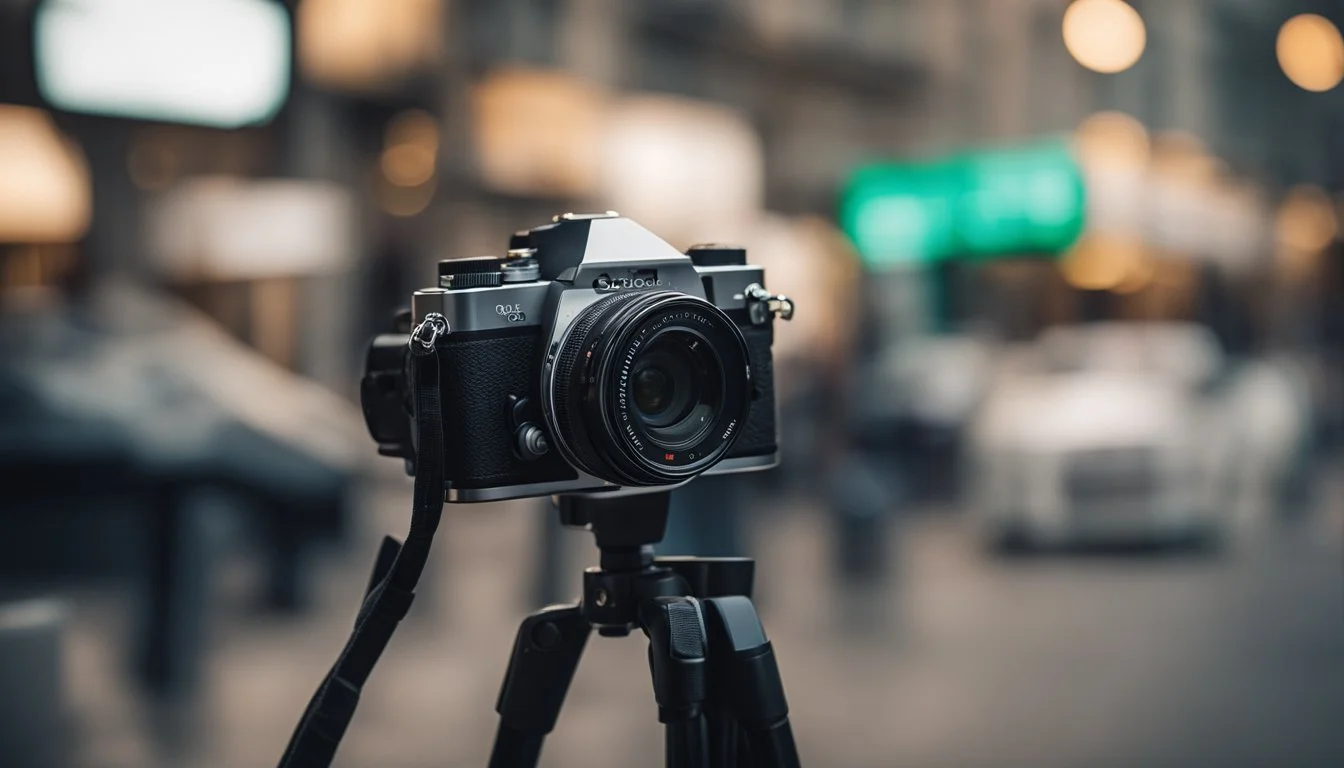Chris Marker: Blurring the Lines Between Reality and Fiction in Cinematic Artistry
Chris Marker stands out as a visionary filmmaker who masterfully blurred the lines between reality and fiction, influencing generations of directors and storytellers. His work, particularly in films like "Sunless," dismantles traditional documentary norms, merging personal anecdotes with cultural observations to forge a unique cinematic language. Through his innovative approach, Marker challenges viewers to question the nature of truth and the mechanisms of storytelling.
Marker's ability to weave together disparate elements into a cohesive narrative invites audiences to explore deeper layers of meaning. His films are not just visual experiences but intellectual exercises that push the boundaries of conventional cinema. By incorporating both scripted and unscripted elements, he creates a fluid interplay between documented reality and artistic interpretation.
Chris Marker's contributions have had a profound impact on the genre, setting a precedent for contemporary filmmakers who seek to blur the distinctions between narrative and documentary forms. This approach not only enriches the viewer's experience but also broadens the scope of what cinema can achieve.
Life and Legacy of Chris Marker
Chris Marker, born Christian François Bouche-Villeneuve in 1921 in Neuilly-sur-Seine, France, was a pioneering filmmaker and multimedia artist. His career spanned over six decades. His body of work includes short films, essays, and interactive media.
Marker's breakthrough came with the 1962 science fiction short film La Jetée. This film, composed almost entirely of still photographs, remains highly influential. In 1983, he released Sans Soleil, a globe-trotting essay film that further cemented his reputation as an innovative filmmaker.
Beyond filmmaking, Marker was a passionate photographer, writer, and digital artist. He was an active political voice, engaging in dialogues about society, history, and human memory.
Marker's The Owl's Legacy, a 13-part TV series, explored ancient Greek culture's impact on Western civilization. The series reflects his ability to bridge historical narratives and contemporary issues.
Notable Works:
La Jetée (1962)
Sans Soleil (1983)
The Owl's Legacy (1989)
His work often blurred boundaries between documentary and fiction, challenging audiences to think deeply about the narratives presented to them. Marker kept a low public profile, preferring his work to speak for itself.
Despite his reclusive nature, Chris Marker's contributions to cinema and media were profound. His innovative techniques and thought-provoking content continue to inspire filmmakers, artists, and thinkers around the world.
Pioneering the Essay Film
Chris Marker stands as a pioneering figure in the world of the essay film. His work blends documentary and fiction, creating a unique genre known for its subjective, reflective qualities.
Markers' La Jetée and Sans Soleil are prime examples. These films use voice-over narration, archival footage, and photomontage to explore complex themes.
The essay film offers a personal perspective. Similar to a literary essay, it allows filmmakers to express opinions and reflect on subjects in a meditative way.
Many credit Marker with bringing visibility to this form, previously inhospitable terrains for traditional film.
Timothy Corrigan, in his book "The Essay Film: From Montaigne, After Marker," highlights Marker's contributions to broadening the scope of cinematic language.
Marker's work at the Harvard Film Archive continues to inspire. His Second Life museum, Ouvroir, showcases his lasting influence on the medium.
The BFI's Sight & Sound recognition of Vertigo as the greatest film coincided with discussions about Marker. These events underline his remarkable impact on the film industry.
Thus, Chris Marker remains central to the essay film, blending reality and fiction to create thought-provoking works.
Analysis of 'La Jetée'
La Jetée is a 1962 science fiction short film by Chris Marker. The film is uniquely presented as a series of still photographs, accompanied by narration. This unconventional approach blurs the lines between reality and fiction, creating a dreamlike quality.
At its core, La Jetée tells the story of a man subjected to time travel experiments in a post-apocalyptic world. He is haunted by a childhood memory. This memory elements leading to his eventual fate are explored through his encounters in different time periods.
The visual style of La Jetée is often described as a photo-roman, or "photo-novel". This format is both striking and effective, using black-and-white images to convey emotion and narrative progression.
Marker’s choice of still images forces viewers to focus on each frame. The absence of motion creates a sense of stasis that contrasts with the fluid concept of time within the story. This paradox enriches the viewer's experience and adds depth to the narrative.
The film's themes include memory, trauma, and the passage of time. The protagonist's journey through different eras emphasizes the cyclical nature of time and the persistence of certain moments in memory.
La Jetée has influenced numerous works, including Terry Gilliam's 12 Monkeys. Its innovative storytelling continues to captivate audiences and inspire filmmakers. Chris Marker’s ability to weave complex themes with a minimalist approach makes La Jetée a seminal work in science fiction cinema.
Innovations in 'Sans Soleil'
Chris Marker’s Sans Soleil stands as a pioneering work in the realm of experimental filmmaking. Marker blends elements of documentary, essay film, and travelogue to create a genre-defying piece that challenges traditional narrative structures.
The film utilizes a mix of personal footage, archival material, and other sources. This eclectic collection of images migrates between different geographies and time periods, creating a constantly shifting visual experience.
Unique Techniques:
Montage: Marker’s use of montage is not just for narrative cohesion but for juxtaposing contrasting scenes and ideas.
Voiceover Narration: The film features a fictional narrator reading letters from a photographer, adding layers of introspection and philosophical musing.
Non-linear Structure: It defies chronological storytelling, offering a fragmented, almost dreamlike experience.
Sans Soleil also delves deep into complex themes such as memory, time, and the nature of human experience. The rapid advancement of life and technology is a recurring motif, questioning how these elements shape our perception of reality.
Visual Style:
Collectomania of Images: The film’s visual repertoire is diverse, capturing everything from mundane daily activities to historical monuments.
Color and Texture: Marker employs a distinct color palette and grainy textures that give the film a timeless quality.
The film is lauded not only for its intellectual depth but also for its aesthetic appeal. Marker’s approach encourages viewers to reflect on their own perceptions, making Sans Soleil a uniquely immersive and thought-provoking experience.
The Aesthetic of Memory
Chris Marker, a visionary filmmaker, often explores the intricate relationship between memory and reality. He employs a non-linear narrative to represent how memories are recalled not in chronological order, but as fragmented moments.
Films like Sunless and La Jetée showcase this concept. They interweave still photographs and archival footage, presenting memories as deep, fragmented, and complex.
Marker’s use of voice-over narration lends a personal touch to these memories. It blurs the boundary between the observer and the observed, making the audience question the nature of recollection.
In La Jetée, a post-apocalyptic scenario is a tale of obsession and memory. The protagonist’s journey through time is more than science fiction; it’s an introspection into how past events shape identity.
His approach to memory also involves cultural contexts. By integrating elements from different cultures, Marker underscores how collective memories shape individual identities.
The aesthetics of memory in his work are not just about the past but about how the past is experienced and remembered. This cinematic approach provides a richer understanding of personal and collective histories.
Films like Sunless epitomize this. The fragmented narrative reflects the ephemeral and subjective nature of memory, offering viewers a multifaceted exploration of time and identity.
Marker’s work transcends mere storytelling, becoming a profound meditation on the philosophical implications of memory. Through innovative techniques, he engages viewers in a dialogue about the fluidity and reliability of their own recollections.
Exploration of Virtual Reality: 'Level Five'
Chris Marker's film Level Five serves as a profound exploration into the realm of virtual reality.
In Level Five, the viewer follows the protagonist, Laura, as she attempts to complete a video game about the Battle of Okinawa. Through this immersive experience, Marker blurs the distinctions between gameplay and real historical events.
The film employs a unique narrative structure, combining documentary elements with fictional storytelling. This method allows Marker to delve into themes of memory, history, and technology.
Level Five is notable for its early and prescient depiction of virtual reality. Marker imagined a world where digital interfaces and historical narratives interact seamlessly, a concept that aligns with modern discussions about virtual influencers and the metaverse.
By leveraging a mix of archival footage and interactive game sequences, Marker challenges the viewer's perception of reality. The protagonist's interactions within the virtual world create a rich tapestry of emotions and reflections.
Through Level Five, Marker illustrates the potential of virtual reality as a medium for storytelling and historical introspection. The film's innovative approach remains influential in the discussions about the future of digital media and virtual experiences today.
Collaborative and Multimedia Works
Chris Marker engaged in many collaborative projects throughout his career, joining forces with other artists, filmmakers, and authors. His connections extended to notable figures such as Alain Resnais and Agnès Varda, with whom he shared a distinct creative synergy.
Marker was deeply involved in multimedia productions. He embraced new technologies and combined them with traditional filmmaking to create unique experiences. His works often included a mix of photography, film, and digital media.
A prime example of his multimedia approach is "Immemory," an interactive CD-ROM project. It offers users a non-linear exploration of personal memories, historical events, and fictional elements, blending various media formats seamlessly.
Marker's participation in the "SLON" collective demonstrates his collaborative spirit. This collective focused on creating politically charged documentaries and involved multiple collaborators working towards a common goal.
Notable Collaborative Projects:
"La Jetée" (1962): Made with collaboration from the cast and crew.
"Far from Vietnam" (1967): A coordinated effort with several directors.
"Grin Without a Cat" (1977): Integrating footage from various filmmakers.
Throughout his career, Marker proved that collaboration and multimedia innovation could push the boundaries of traditional cinema. His work continues to inspire contemporary filmmakers and multimedia artists.
His embrace of multimedia technologies not only showcased his adaptability but also his desire to explore new ways of storytelling. This made him a forerunner in blending reality and fiction through collaborative and technological means.
The impact of his collaborative efforts and multimedia explorations remains significant, influencing modern perspectives on how stories can be told and experienced in a digital age.
Influence on Contemporary Artists and Filmmakers
Chris Marker's innovative approach has left a significant mark on contemporary artists and filmmakers. His blending of reality and fiction, particularly through his use of cinematic hybrids, continues to inspire. Films such as La Jetée, which employs a series of still photographs, demonstrate his unique storytelling techniques.
Many filmmakers, including Jean-Luc Godard, have drawn inspiration from Marker's work. Godard's films like Vivre sa vie and Contempt reflect a similar challenge to traditional narrative structures. Both directors push the boundaries of what cinema can achieve.
Marker's exploration of new media forms, such as video installations, has also impacted the art world. Works like Silent Movie and Zapping Zone illustrate his ability to integrate different media. Contemporary artists echo this multimedia approach.
Virtual influencers, though seemingly unrelated, reflect some of Marker's ideas. These computer-generated characters blur the lines between real and digital, much like Marker's films blur fiction and reality. Such phenomena indicate a broader cultural impact.
Marker's influence is seen in the rise of the essay film genre, where personal reflection and documentary intertwine. Filmmakers in this genre often cite Marker's influence. His legacy persists in the evolving techniques and genres in cinema and art.
Contemporary exhibitions and retrospectives of Marker's work continue to draw attention. Artists and audiences are reminded of his lasting influence, ensuring his techniques and ideas remain relevant.
Marker's Narrative Techniques
Chris Marker, a French filmmaker, employed a variety of innovative narrative techniques that set his work apart.
He often blurred the lines between fiction and documentary, creating a sense of ambiguity that challenges the viewer's perception of reality.
Marker's use of montage techniques, inspired by Dziga Vertov, allowed him to juxtapose images from disparate sources.
This method can be seen in Sunless, where sequences from Tokyo, the Ile de France, and Guinea Bissau are placed together, creating a rich tapestry of visual information.
Voiceovers played a crucial role in Marker's films.
In La Jetée, the voiceover guides the viewer through the protagonist's journey, adding layers to the story and providing context to the otherwise silent images.
Marker also utilized still images in place of traditional moving pictures, as seen in La Jetée.
This choice forces the audience to focus on the storytelling aspect, heightening the emotional impact of each frame.
Additionally, he employed cybernetic elements in his later works.
His film Level Five integrates digital interfaces and video game aesthetics, reflecting Marker's fascination with technology and its implications on narrative forms.
Markers' experimental techniques continually pushed the boundaries of film.
By combining traditional narrative structures with innovative visual elements, he created a unique storytelling approach that remains influential.
Critical Reception and Interpretations
Chris Marker's work is widely celebrated for its innovative approach to blending reality and fiction. Critics admire his unique style, particularly in films like La Jetée and Sans Soleil. His ability to weave narrative and documentary elements creates a distinct cinematic experience.
Positive Reception:
Marker's films often receive praise for their intellectual depth. La Jetée, for instance, is lauded for its storytelling through still images, a technique that stands out in film history.
Interpretations:
Many scholars interpret Marker’s work through the lens of surrealism and postmodernism. These interpretations emphasize his challenge to traditional narrative structures. His movies often explore themes of memory and time, leading to various academic discourses.
Film enthusiasts appreciate how Marker blurs the distinction between reality and illusion. This approach is evident in Sans Soleil, where he seamlessly integrates real footage with fictional commentary, prompting viewers to question the nature of truth in media.
Another notable aspect is Marker's exploration of personal and collective memory. Critics often highlight how his films reflect on how memories shape identity and perception. This thematic focus adds layers of meaning and engages audiences on a deeper level.
Overall Impact:
Chris Marker’s influence extends beyond just filmmakers; his style resonates with visual artists and multimedia creators. The critical acclaim and diverse interpretations of his work underscore his significant role in contemporary cinema.
The Political Dimension in Marker's Films
Chris Marker consistently used his films to address political themes. His approach often combined documentary style with fictional elements, creating a unique space where reality and imagination intersect.
In Sans Soleil (1982), Marker weaves a tapestry of images and thoughts, highlighting political unrest and cultural differences across various countries. This film questions the nature of memory and reality, reflecting on the political implications of both.
Le Fond de l'air est rouge (1977) is another notable work. This film examines the global political upheavals of the 1960s and 1970s. Marker's montage technique and use of archive footage illustrates his critical perspective on revolutionary movements and their outcomes.
Breakdown of Key Themes:
Revolution and Reform: Le Fond de l'air est rouge
Cultural and Political Commentary: Sans Soleil
Historical Reflection: Use of archival footage and narrative in multiple works
Marker's Staring Back exhibition underscores his lifelong interest in documenting and organizing his work as an archive. This effort highlights his commitment to creating a comprehensive political document through visual media.
His explorations of new media also emphasize a relentless pursuit of innovative ways to discuss political issues. From video installations like Zapping Zone to Owls at Noon Prelude: The Hollow Men, Marker continuously pushed boundaries, challenging the audience's perception and encouraging political engagement.
Techniques of Blurring Fact and Fiction
One of Chris Marker's key techniques is the use of archival footage intertwined with fictional narratives. This hybrid approach keeps the audience questioning the nature of reality presented on screen.
Voice-over narration is another method Marker employs. The authoritative tone lends credibility to the fictional elements, making them appear factual.
He also uses photomontages and still images. By including real historical photos alongside staged ones, Marker creates a seamless blend where fact and fiction coexist.
First-person perspective is often utilized. This immersive technique draws the audience into the narrative, blurring the line between personal experience and fabricated story.
Juxtaposition of contrasting scenes is frequently observed in his work. By placing documentary footage next to fictional scenes, Marker underscores the interconnectedness of reality and storytelling.
The use of real locations adds another layer of authenticity. Filming in actual places tied to the narrative ensures that the fictional story feels grounded in reality.
Non-linear storytelling disrupts the traditional narrative flow, challenging the audience to decipher what is real and what is imagined. This technique encourages viewers to piece together the story themselves.
Finally, interviews with real people add a documentary feel to fictional stories. Authentic comments from interviewees lend a sense of truth to the narrative, further blurring the line.
Chris Marker’s inventive use of these techniques creates a unique storytelling experience that challenges perceptions of reality and fiction.
The Use of Photography in Marker's Storytelling
Chris Marker expertly uses photography to bridge the gap between reality and fiction, creating a seamless blend that challenges traditional narratives.
In works like Staring Back, he combines still images with narrative techniques. This project synthesizes his diverse career, capturing moments from both fictional films and documentaries.
Marker's photography transforms mundane moments into profound reflections. Each image tells a story, often accompanied by text that adds layers of meaning. This combination of word and image is central to his storytelling style.
His iconic film La Jetée exemplifies this approach. The film is constructed almost entirely from still photographs, creating a unique narrative structure that blurs the lines between cinema and photography.
In photo-books such as those featured in the Gould Collection, Marker juxtaposes photographs with stories, like those by Shirley Jackson. This pairing explores themes of memory and human emotion, inviting viewers to find connections between the two mediums.
He often uses photographs to convey a stream of consciousness. This technique, blending diary-like entries with visual imagery, allows for a more intimate and personal storytelling experience.
Marker’s integration of photographs into his films and books highlights the blurred boundaries between still and moving images. This technique not only enhances visual storytelling but also deepens the emotional and intellectual impact on the audience.
Through his use of photography, Chris Marker redefines the limits of visual storytelling, crafting narratives that are both visually compelling and intellectually stimulating.
Soundscapes and Music in Marker's Cinema
Chris Marker’s films are known for their evocative soundscapes and innovative use of music. He skillfully combines ambient noises, spoken word, and music to create immersive experiences.
In Sans Soleil (1983), the soundtrack blends electronic music with traditional Japanese sounds. This juxtaposition reinforces the film’s exploration of memory and culture.
La Jetée (1962) uses a minimalist approach, employing sound effects and a haunting score to enhance its narrative. The use of silence and sparse dialogue allows the audience to focus on the visual storytelling and the protagonist's internal struggle.
Marker's background in classical music also influences his work. He often incorporates pieces by composers like Beethoven or Mahler.
Key Elements:
Ambient Sounds: Enhance the realism and atmospheric quality.
Music: Complements the visual narrative without overpowering it.
Silence: Used strategically to heighten tension or focus on visuals.
Marker’s integration of sound and music makes his films a rich, multi-sensory experience, demonstrating his mastery in blending different artistic elements.
Marker’s Legacy in Film and Art
Chris Marker’s influence on cinema and art remains significant. Known for his innovative approach, he often combined documentary and narrative styles, creating a unique vision. His 1982 film Sans Soleil is frequently cited as an exemplary work of the essay film genre, blending images and commentary to explore memory, time, and place.
Marker’s status as a cinematic essayist is unquestionable. He seamlessly merged images and thoughts, producing works that were both intellectually stimulating and visually captivating. His 1962 film La Jetée stands out for its use of still photographs to tell a science fiction story, emphasizing his ability to push cinematic boundaries.
Beyond filmmaking, Marker was a prolific artist. He was adept in various mediums including photography, illustration, and multimedia installations. His work often explored political themes and the human condition, reflecting his engagement with contemporary social issues.
Long fascinated by technology, Marker also experimented with interactive media. His project Immemory, a CD-ROM, allows users to navigate through a complex web of images and narratives. This work exemplifies his forward-thinking approach and willingness to explore new forms of storytelling.
Film Year La Jetée 1962 Sans Soleil 1982 A Grin Without a Cat 1977
The Owl's Legacy, a 13-part TV series, further demonstrates Marker’s versatility. It investigates the connections between modern Western society and ancient Greek culture, underscoring his broad intellectual interests.
Marker’s impact on future generations of filmmakers and artists is undeniable. His works continue to inspire, often cited in academic and creative circles for their innovative approach to storytelling and visual composition.
Conclusion
Chris Marker’s innovative approach to filmmaking consistently blends the real and the unreal.
His use of still images in La jetée challenges traditional narrative techniques. This film, though short, leaves a lasting impression due to its unique structure and philosophical depth.
Marker's works continue to inspire filmmakers and audiences, pushing the boundaries of what cinema can achieve.
His fascination with memory and time is evident in almost every project. He questions the reliability of perception, inviting viewers to reassess their own experiences and beliefs.










